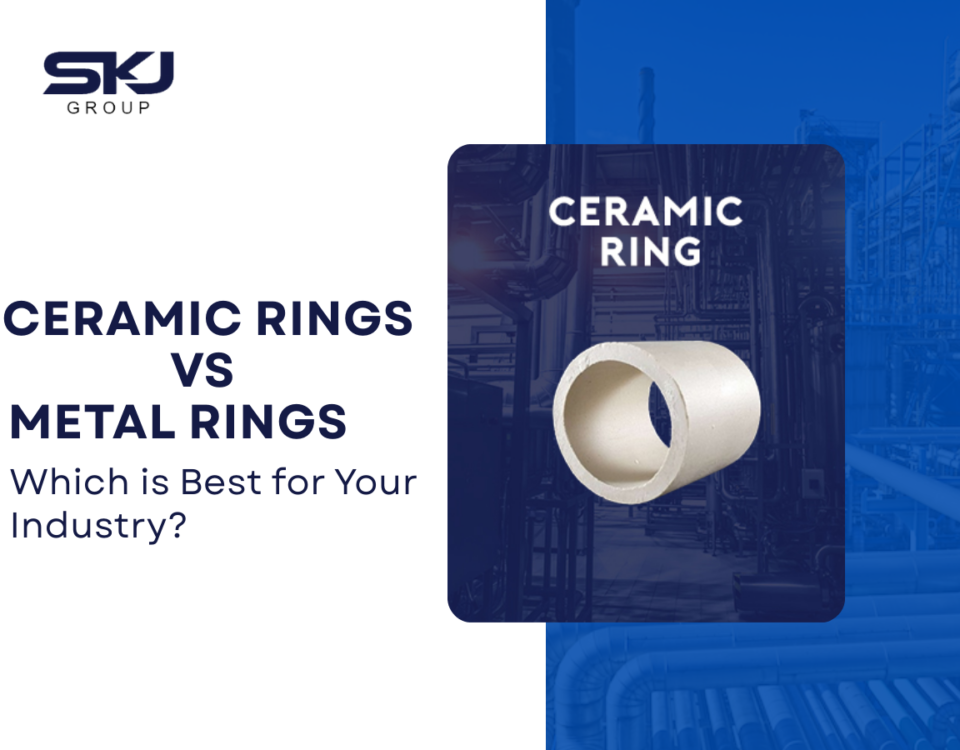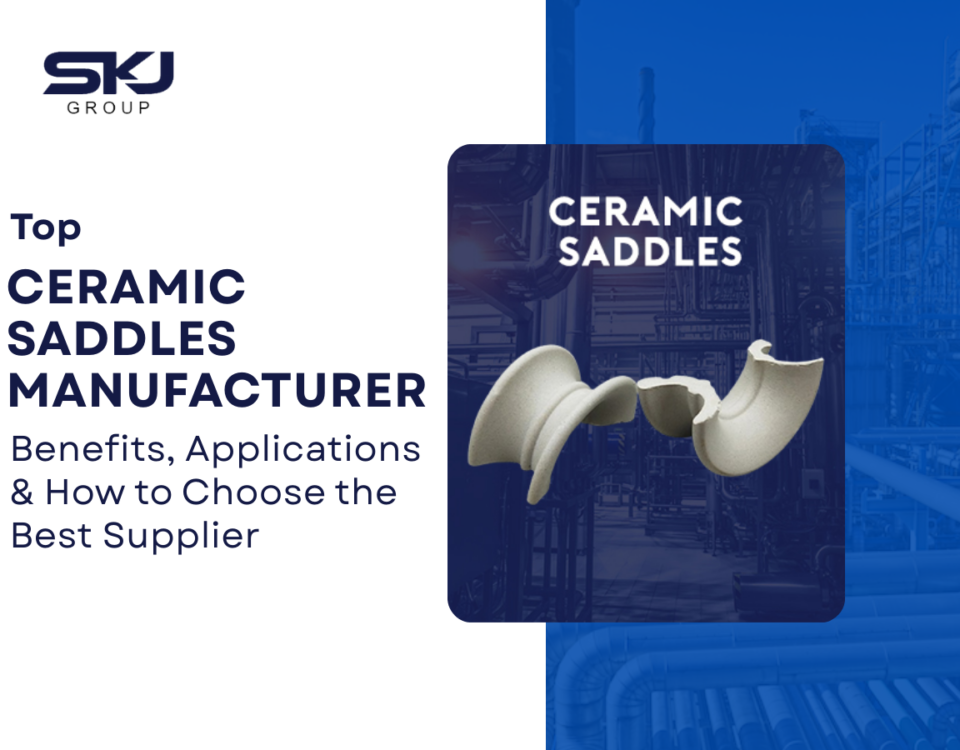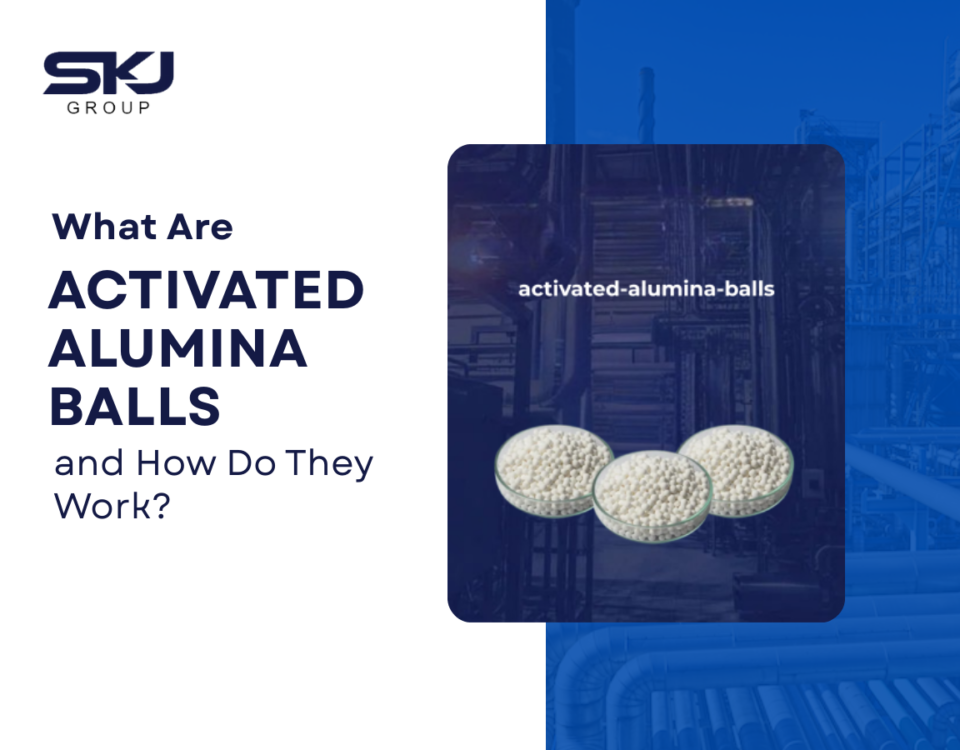The Future of Tower Packing: Innovations and Trends in the Industry

Industrial Applications: Exploring Manufacturers of Ceramic Foundry Filters
August 9, 2024
Heating Things Up: A Look at Ceramic Heating Element Manufacturers
August 13, 2024In the ever-evolving landscape of industrial processes, tower packing plays a crucial role in enhancing the efficiency of various chemical and petrochemical operations. As we look towards the future, innovations in materials science, particularly in the realm of ceramics, are set to revolutionize the tower packing industry. This article explores the latest trends, technological advancements, and the growing influence of ceramic materials in shaping the future of tower packing.
The Evolution of Tower Packing Materials
Traditionally, tower packing materials have been made from metals, plastics, and basic ceramics. However, the demand for higher performance, durability, and chemical resistance has led to a shift towards advanced materials. Ceramic manufacturers and technical ceramics companies are at the forefront of this revolution, developing innovative solutions that address the complex needs of modern industrial processes.
Key advantages of advanced ceramic tower packing include:
1. Superior chemical resistance
2. High thermal stability
3. Excellent mechanical strength
4. Low pressure drop
5. Enhanced mass transfer efficiency
6. Longer service life
These properties make ceramic tower packing an attractive option for a wide range of applications, from chemical processing to environmental protection.
Innovations in Ceramic Tower Packing
Ceramic manufacturing companies are pushing the boundaries of what’s possible with tower packing materials. Some of the most exciting innovations include:
1. Nanostructured Ceramics: Utilizing nanotechnology to create packing materials with enhanced surface area and improved mass transfer properties.
2. Composite Ceramics: Combining different ceramic materials to achieve optimal performance characteristics for specific applications.
3. Biomimetic Designs: Drawing inspiration from nature to create packing structures that maximize efficiency and minimize pressure drop.
4. Smart Packing Systems: Incorporating sensors and monitoring capabilities for real-time performance optimization.
5. 3D-Printed Ceramics: Leveraging additive manufacturing techniques to produce complex, customized packing geometries.
Materials Driving the Future of Tower Packing
Various ceramic materials are being explored for use in advanced tower packing, each offering unique advantages:
1. Alumina ceramic manufacturers produce packing elements known for their high chemical resistance and mechanical strength.
2. Zirconia manufacturers create packing with excellent thermal stability and wear resistance.
3. Silicon nitride manufacturers offer packing materials with superior thermal shock resistance and low density.
4. Boron carbide manufacturers produce ultra-hard packing elements for abrasive environments.
Other ceramic materials being utilized include:
– Aluminum nitride
– Ceramic powder
These materials are often combined or tailored for specific applications to achieve optimal performance in tower packing systems.
The Role of Advanced Manufacturing Techniques
The production of high-performance ceramic tower packing relies heavily on advanced manufacturing techniques. Ceramic machining companies play a crucial role in this process, offering services such as:
1. Precision shaping and sizing of packing elements
2. Surface texturing for enhanced mass transfer
3. Creating complex internal structures for improved fluid dynamics
4. Fine-tuning packing geometries for specific applications
Companies seeking ceramic machining near me can benefit from partnering with experienced providers who understand the unique challenges of working with advanced ceramic materials.
Specialized Ceramic Products for Tower Packing
In addition to the packing elements themselves, ceramic manufacturers produce a range of related products for tower packing systems:
– Ceramic tube manufacturers create support structures and distribution systems.
– Ceramic plate manufacturers produce collector trays and liquid distributors.
– Ceramic substrate manufacturers develop specialized surfaces for enhanced mass transfer.
– Ceramic liners manufacturers offer protective coatings for tower internals.
– Ceramic ball manufacturers produce spherical packing elements for certain applications.
– Ceramic ferrule manufacturers create components for connecting and sealing tower sections.
These specialized products demonstrate the versatility of ceramics in tower packing applications across various industries.
Emerging Trends in Tower Packing Technology
As the industry continues to evolve, several trends are shaping the future of tower packing:
1. Sustainability Focus: Increasing emphasis on energy efficiency and reduced environmental impact is driving the development of eco-friendly packing materials.
2. Digitalization: Integration of IoT (Internet of Things) technologies for real-time monitoring and optimization of tower packing performance.
3. Customization: Growing demand for tailored packing solutions to meet specific process requirements and operating conditions.
4. Hybrid Systems: Combining different types of packing materials and structures within a single tower for optimized performance.
5. Modular Design: Development of easily replaceable and upgradable packing systems for improved maintenance and flexibility.
The Impact of Ceramic Matrix Composites
Ceramic matrix composite manufacturing is opening up new possibilities in tower packing design. These advanced materials offer:
1. Enhanced mechanical properties
2. Improved thermal management
3. Greater design flexibility
Ceramic matrix composites manufacturing techniques are evolving rapidly, allowing for the creation of packing elements with complex geometries and tailored properties.
Challenges and Opportunities
While ceramic tower packing offers numerous advantages, the industry faces several challenges:
1. High initial costs: Advanced ceramic materials and manufacturing processes can be expensive, requiring justification through long-term performance benefits.
2. Knowledge gap: Many end-users are unfamiliar with the benefits of advanced ceramic packing, necessitating education and outreach efforts.
3. Retrofitting existing systems: Adapting older towers to accommodate new ceramic packing materials can be complex and costly.
4. Material optimization: Continuous research is needed to develop ceramic formulations that balance performance, cost, and manufacturability.
Despite these challenges, the opportunities in the ceramic tower packing industry are significant. As industrial ceramics products continue to improve and manufacturing costs decrease, we can expect to see wider adoption across various sectors.
The Role of Ceramic Foundry Filters
Ceramic foundry filters manufacturers are also contributing to the advancement of tower packing technology. Their expertise in creating porous ceramic structures is being applied to develop novel packing elements with enhanced fluid distribution and mass transfer properties.
Advancements in Ceramic Machining
The ability to precisely shape and finish ceramic tower packing elements is crucial for optimal performance. Recent advancements in ceramic machining techniques include:
– Machining zirconia ceramic with improved precision and surface quality
– Silicon nitride machining for creating complex internal structures
– Machining aluminum nitride to produce lightweight, thermally conductive packing elements
These capabilities allow for the production of tower packing with intricate designs that maximize efficiency and minimize pressure drop.
The Growing Importance of Technical Ceramics
As the demands on tower packing performance increase, technical ceramics manufacturers are playing an increasingly important role. Their ability to develop and produce ceramics with specific properties tailored to the needs of tower packing applications is driving innovation in the industry.
Ceramic producers and ceramic product manufacturers are collaborating closely with end-users to understand their specific needs and develop custom solutions. This close partnership is leading to rapid advancements in tower packing technology and performance.
Frequently Asked Questions (FAQs)
1. Q: What are the main advantages of ceramic tower packing over traditional materials?
A: Ceramic tower packing offers superior chemical resistance, thermal stability, and longer service life compared to traditional materials. At SKJ Group, we specialize in producing high-performance ceramic packing that outperforms conventional options.
2. Q: Can ceramic tower packing be customized for specific applications?
A: Yes, ceramic tower packing can be tailored to meet specific process requirements. SKJ Group offers customized packing solutions based on factors such as chemical environment, operating temperatures, and desired mass transfer efficiency.
3. Q: How does ceramic tower packing contribute to energy efficiency?
A: Ceramic tower packing can improve energy efficiency by enhancing mass transfer, reducing pressure drop, and minimizing the need for frequent replacements. SKJ Group’s advanced ceramic packing is designed to optimize process efficiency and reduce overall energy consumption.
4. Q: What maintenance is required for ceramic tower packing?
A: Ceramic tower packing generally requires less maintenance than traditional materials due to its durability and chemical resistance. However, regular inspections are recommended. SKJ Group provides guidance on best practices for maintaining and optimizing the performance of our ceramic packing products.
5. Q: How does the cost of ceramic tower packing compare to traditional materials?
A: While the initial cost of ceramic tower packing may be higher, its longer lifespan and improved performance often result in lower total cost of ownership. SKJ Group can help you analyze the long-term benefits and ROI of switching to ceramic packing for your specific application.
Conclusion: Embracing the Ceramic Revolution in Tower Packing
As we look to the future of industrial processes, it’s clear that ceramic tower packing will play an increasingly vital role in enhancing efficiency, reducing environmental impact, and improving overall performance. The innovations and trends discussed in this article represent just the beginning of what’s possible with advanced ceramic materials and manufacturing techniques.
SKJ Group is at the forefront of this ceramic revolution, offering cutting-edge tower packing solutions that leverage the latest advancements in materials science and manufacturing technology. Our team of experts is dedicated to pushing the boundaries of what’s possible, developing ceramic packing products that meet the evolving needs of various industries.
Whether you’re looking to upgrade existing systems or design new processes, SKJ Group has the expertise and capabilities to provide you with the optimal tower packing solution. Our commitment to innovation, quality, and customer satisfaction ensures that you’ll receive not just a product, but a comprehensive solution tailored to your specific requirements.
Don’t let outdated tower packing hold back your processes or compromise your efficiency. Partner with SKJ Group today and experience the transformative power of advanced ceramic tower packing. Contact us now to learn more about our products and services, and take the first step towards optimizing your operations with cutting-edge ceramic technology. Together, we can shape the future of industrial processes and drive sustainable growth in your industry.




